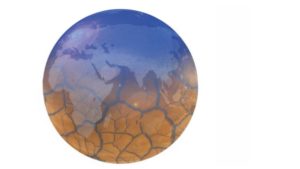What Farmers Can Do When Water Starts Running Out [with Infographic]
 This past February, in the height of its summer, Cape Town, South Africa, almost ran out of water. Drastic measures were taken when each family in the city of 3.8 million were allotted only 50 liters to use each day — about 12 gallons. To put that in perspective, a single load of a modern, high-efficiency washer uses 27 gallons.
This past February, in the height of its summer, Cape Town, South Africa, almost ran out of water. Drastic measures were taken when each family in the city of 3.8 million were allotted only 50 liters to use each day — about 12 gallons. To put that in perspective, a single load of a modern, high-efficiency washer uses 27 gallons.
Officials announced that the city would run out of water completely by April 16. A few days later, it revised the date to May 11, saying the final date was now almost a full month later.
For now, the city has dodged disaster due to timely rains and citizens curbing their water use. But the little-known story of why it revised its no-more-water date from April to May sheds light on how powerful growers can be in even the worst of water crises.
About 20 years ago, the growers of the Hex Valley Water Users Association decided to take extreme action.
“We drew up a master plan in 1998, identifying infrastructure needed and available water resources,” says Christiaan Olivier, Hex Valley Water Users Association CEO.
The growers decided to build their own reservoir system. Beginning in 2007, they began building two dams, Ospaasdam and Kleinbergdam. Last year, the association installed a water reuse plant.
And on February 6, 2018, the association offered its water to Cape Town, giving the city another month to breathe.
It was an expensive project for the growers, but its one that has helped them keep their crops and farms going despite unreliable water availability.
What We Can Learn from Overseas Peers
Growers in arid countries like Australia, Israel, and South Africa are among the most creative in the world when it comes to water management. Each country has a thriving agricultural industry, even though water is scarce.
A good percentage of American vegetable growers are in areas prone to drought. Even those in traditionally wet areas face unexpected drought conditions more frequently than they normally do.
Between increasing water demands, an aging water infrastructure, and unpredictable climate shifts, it’s inevitable water access will launch fights over who has the right to use what’s available.
So what can we learn from our peers already grappling with limited water resources?
Adopt Efficient Methods Before They’re Needed
“What is clear to Australian growers, particularly those who have experienced severe drought for many years, is that water is a valuable commodity,” says Shaun Lindhe, National Manager, Communications, with AusVeg, a national vegetable industry association in Australia.
Lindhe says adopting efficient methods before they’re necessary gives growers more security in the long run.
“Growers from all around the world could benefit from the efficient application of water, both as a way of reducing water usage (thereby future-proofing water levels in times of drought) and as a way of reducing costs,” he says.
Earn Political Goodwill Prior to A Crisis
Politically speaking, taking the initiative early can buy goodwill and give growers a bigger voice on how water is allotted.
“Through the adoption and application of water-efficient technologies and adapting growing practices to a changing environment, they can lead the way to ensuring that global agriculture has a reliable and healthy water supply for the future,” Lindhe says.
Hex Valley’s Olivier urges growers to engage water issues at the local level with local water boards rather than at a higher level.
“Water resource management must be done on local catchment levels and not by national government,” he says.
Growers taking the initiative in water management is a winning strategy. Not only do growers have a more powerful position to negotiate from when they are more efficient in their water use, vegetable quality and yield aren’t impacted, Lindhe says.
“In fact, it can lead to higher crop quality and yields,” Lindhe says.










